
The Enchanting Annapurna Circuit: Nepal's Treasured Trekking Route
Explore the Annapurna Circuit: Nepal's legendary trek through diverse landscapes, rich cultures, and breathtaking Himalayan vistas, offering an unforgettable adventure.
Nestled in the heart of the Himalayas, the Annapurna Circuit in Nepal offers an unparalleled trekking experience that beckons adventurers from around the globe. This iconic route traverses diverse landscapes, from lush subtropical forests and terraced rice paddies to arid high-altitude deserts and snow-capped peaks. The trek provides breathtaking views of the Annapurna and Dhaulagiri mountain ranges, making it a dream destination for nature lovers and trekkers alike. The journey along the Annapurna Circuit is as culturally rich as it is scenic. Trekkers pass through charming villages inhabited by the Gurung, Manangi, and Thakali people, each offering a unique glimpse into Nepal's diverse cultural tapestry. Along the way, ancient monasteries, prayer flags, and chortens add a spiritual dimension to the adventure, creating a truly immersive experience. Furthermore, the hospitality of the local people, who often welcome trekkers with warm smiles and traditional dal bhat meals, enhances the sense of camaraderie on the trail. The Annapurna Circuit is not just about trekking; it is also about personal achievement. The challenging terrain and high-altitude passes, such as the renowned Thorong La Pass at an elevation of 5,416 meters, test the endurance and determination of even the most seasoned trekkers. However, the sense of accomplishment upon completing the circuit, paired with the stunning vistas and rich cultural interactions, make it an unforgettable journey that stays with you long after you've returned home.
Local tips in Annapurna Circuit
- Optimal Trekking Season: The best times to trek are from March to May and September to November when the weather is clear and the temperatures are moderate.
- Acclimatization: Spend extra days at Manang or other high-altitude stops to acclimatize and reduce the risk of altitude sickness.
- Permits: Ensure you have the necessary permits, including the Annapurna Conservation Area Permit (ACAP) and the Trekkers' Information Management System (TIMS) card.
- Local Guides: Hiring a local guide can enrich your experience with cultural insights and help navigate the more challenging parts of the trail.
- Packing Essentials: Pack layers of clothing for varying temperatures, a good quality sleeping bag, and sturdy trekking boots.
- Cash Supply: Carry enough cash as ATMs are scarce along the route, especially in remote areas.
- Hydration: Bring a water purification system or tablets to safely drink water from local sources.
- Respect Local Customs: Always ask for permission before taking photos of people and follow local customs and traditions to show respect to the residents.
The Enchanting Annapurna Circuit: Nepal's Treasured Trekking Route
Nestled in the heart of the Himalayas, the Annapurna Circuit in Nepal offers an unparalleled trekking experience that beckons adventurers from around the globe. This iconic route traverses diverse landscapes, from lush subtropical forests and terraced rice paddies to arid high-altitude deserts and snow-capped peaks. The trek provides breathtaking views of the Annapurna and Dhaulagiri mountain ranges, making it a dream destination for nature lovers and trekkers alike. The journey along the Annapurna Circuit is as culturally rich as it is scenic. Trekkers pass through charming villages inhabited by the Gurung, Manangi, and Thakali people, each offering a unique glimpse into Nepal's diverse cultural tapestry. Along the way, ancient monasteries, prayer flags, and chortens add a spiritual dimension to the adventure, creating a truly immersive experience. Furthermore, the hospitality of the local people, who often welcome trekkers with warm smiles and traditional dal bhat meals, enhances the sense of camaraderie on the trail. The Annapurna Circuit is not just about trekking; it is also about personal achievement. The challenging terrain and high-altitude passes, such as the renowned Thorong La Pass at an elevation of 5,416 meters, test the endurance and determination of even the most seasoned trekkers. However, the sense of accomplishment upon completing the circuit, paired with the stunning vistas and rich cultural interactions, make it an unforgettable journey that stays with you long after you've returned home.
When is the best time to go to Annapurna Circuit?
Iconic landmarks you can’t miss
Pokhara Lakeside
Explore the enchanting Pokhara Lakeside, where serene waters meet stunning mountain views, offering adventure and relaxation in the heart of Nepal.
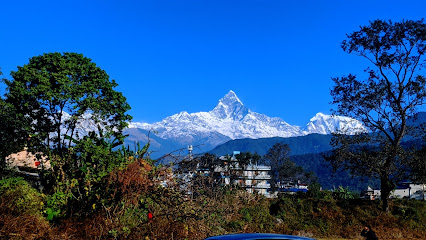
World Peace Pagoda
Discover tranquility and breathtaking views at the World Peace Pagoda in Pokhara, a stunning symbol of harmony and serenity.
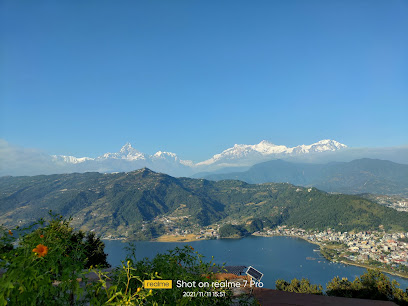
Annapurna Conservation Area
Explore the breathtaking beauty and rich culture of the Annapurna Conservation Area, a must-visit national park in Nepal for every adventurer's itinerary.
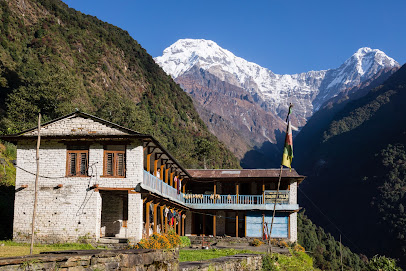
Shree Muktinath Temple
Explore Shree Muktinath Temple: a Himalayan jewel of spiritual significance, where culture, devotion, and breathtaking landscapes unite.
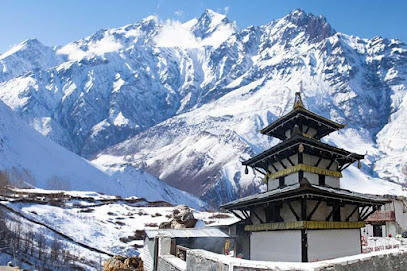
International Mountain Museum
Discover the rich heritage of the Himalayan region at the International Mountain Museum in Pokhara, a unique blend of history, culture, and nature.
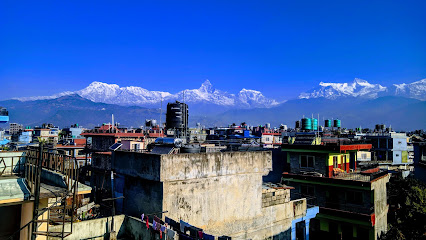
Mahendra Cave
Explore the mesmerizing Mahendra Cave in Pokhara, Nepal, a natural wonder filled with stunning rock formations and serene underground rivers.
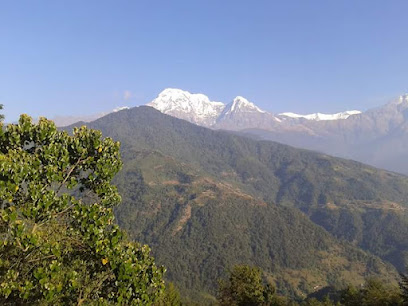
Pumdikot Religious Area
Experience the serene beauty and spiritual essence of Pumdikot Religious Area, a hidden gem in Pokhara offering stunning views and rich cultural heritage.
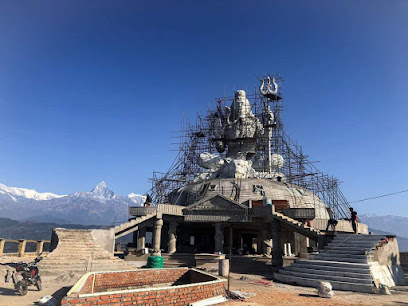
Tal Barahi Temple, Pokhara
Experience the spiritual allure of Tal Barahi Temple, a stunning lakeside haven in Pokhara, surrounded by the majestic Annapurna range.
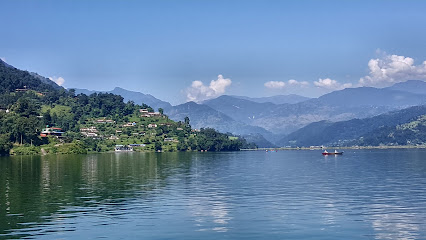
Sarangkot Sunrise Pokhara
Experience breathtaking sunrises and panoramic views of the Annapurna range at Sarangkot, a must-visit destination in Pokhara, Nepal.
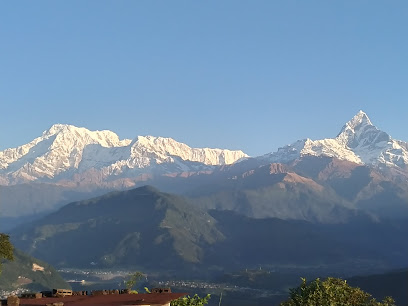
Basundhara Park
Discover tranquility and stunning views at Basundhara Park, a serene escape in the heart of Pokhara, Nepal, perfect for relaxation and nature lovers.

MAULA KALIKA
Explore the spiritual essence and breathtaking views of Maula Kalika, a must-visit Hindu temple in the heart of Nepal.
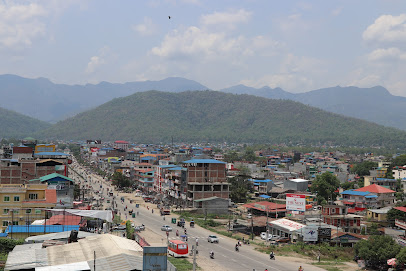
Annapurna Base Camp Trek
Explore the enchanting Annapurna Base Camp Trek, where breathtaking mountain vistas meet rich cultural experiences in the heart of the Himalayas.
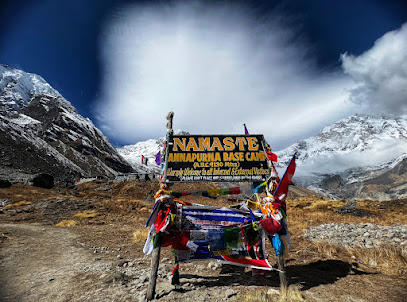
Gurkha Memorial Museum
Discover the heroic legacy of the Gurkha soldiers at the Gurkha Memorial Museum in Pokhara, a must-visit for history enthusiasts and travelers alike.
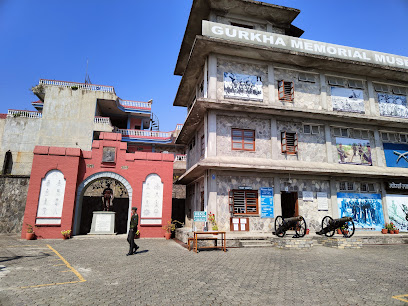
Matepani Gumba
Explore the serenity of Matepani Gumba, a beautiful Buddhist temple in Pokhara, offering breathtaking views and a rich cultural experience.
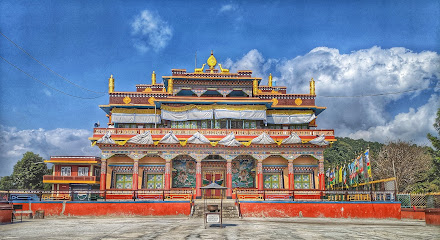
Annapurna Sanctuary
Explore the breathtaking Annapurna Sanctuary, a trekker's paradise in the heart of the Himalayas, offering stunning views and rich cultural experiences.
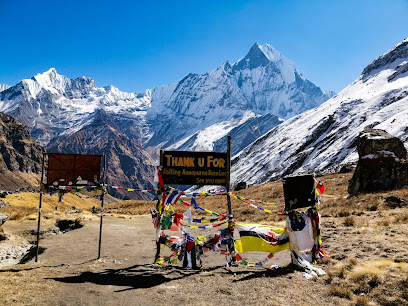
Unmissable attractions to see
International Mountain Museum
Discover the rich heritage of the Himalayas at the International Mountain Museum in Pokhara, a must-visit for nature and culture enthusiasts.
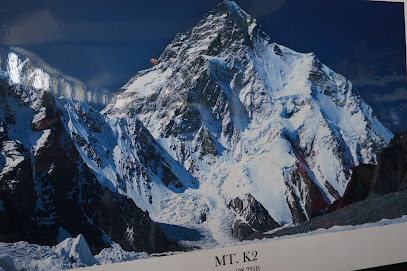
Tal Barahi Temple, Pokhara
Discover the serene beauty and spiritual depth of Tal Barahi Temple, a stunning Hindu temple on Phewa Lake in Pokhara, Nepal.
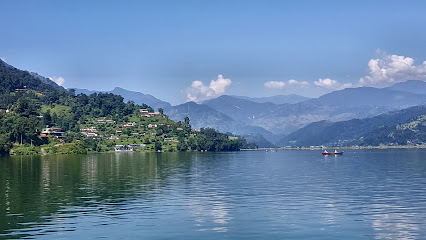
Sarangkot View Tower
Discover the stunning beauty of the Annapurna Range from Sarangkot View Tower, a must-visit destination in Pokhara, Nepal.
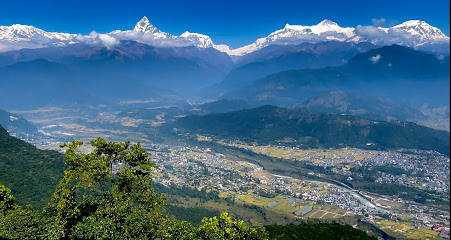
Basundhara Park
Discover tranquility at Basundhara Park, Pokhara's serene oasis with stunning views of the Annapurna range and lush landscapes.
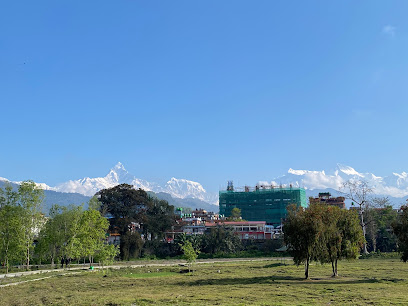
Phewa Lake View Point
Discover the breathtaking panoramas of Phewa Lake and the Annapurna range at this must-visit viewpoint in Pokhara, Nepal.
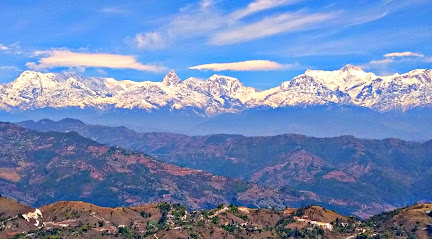
Rupse Waterfall
Experience the splendor of Rupse Waterfall, a stunning natural wonder on the Annapurna Circuit, perfect for adventure and nature enthusiasts.
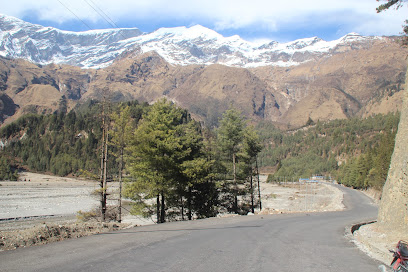
Dhampus View Tower
Experience the majestic Annapurna range and Fishtail mountains at Dhampus View Tower – a breathtaking tourist attraction in Nepal's heart.
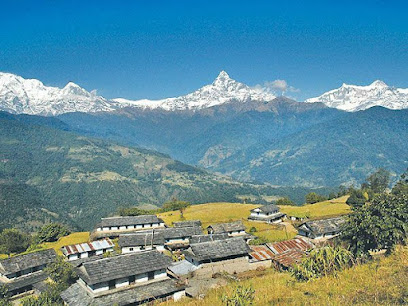
Chamche Waterfall
Discover the stunning Chamche Waterfall, a breathtaking natural attraction along the Annapurna circuit, perfect for trekkers and nature lovers alike.
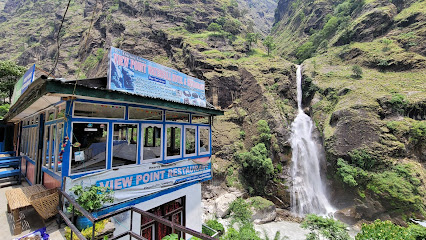
Ghorepani
Discover the stunning views and rich culture of Ghorepani, a must-visit destination in the heart of the Annapurna region, Nepal.
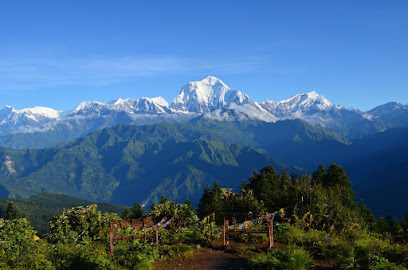
Dhumba Taal
Experience the tranquil beauty of Dhumba Taal, a serene lake surrounded by the majestic Annapurna mountain range, perfect for nature lovers and travelers.
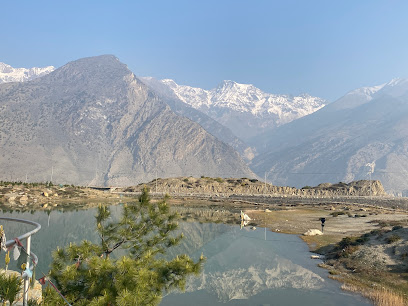
Bamboo
Discover the enchanting beauty of Bamboo in Ghandruk, your gateway to the Annapurna Base Camp trek, surrounded by breathtaking Himalayan views.
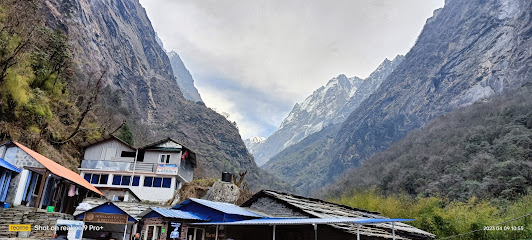
Australian Camp Trail head
Discover the stunning landscapes and rich culture at the Australian Camp Trailhead, the gateway to the Annapurna region's breathtaking hiking trails.
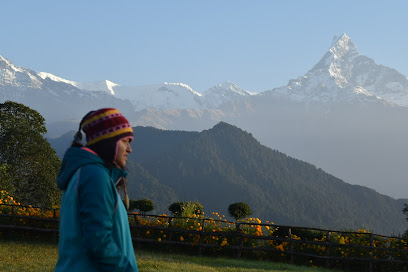
Thorang La
Discover Thorang La, a breathtaking mountain pass in Nepal, renowned for its stunning landscapes and epic trekking routes in the Annapurna region.
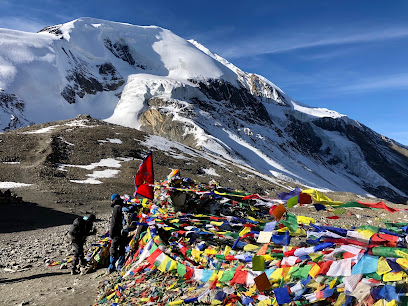
Kande / khare Australian Camp Hike Start Point
Explore the breathtaking beauty of Kande/Khare Australian Camp, a premier hiking destination with stunning views of the Annapurna range.
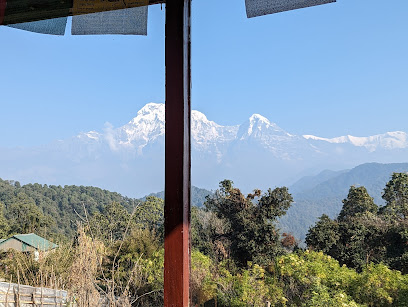
Kahun Danda
Discover Kahun Danda, a breathtaking viewpoint near Pokhara, offering stunning views of the Annapurna Range and a serene escape into nature.
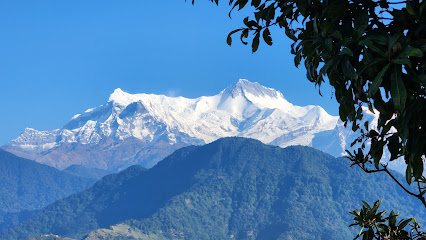
Essential places to dine
Byanjan
Experience the best of Continental, Indian, and Nepalese cuisine at Byanjan in Pokhara - where every meal is a celebration of flavor.
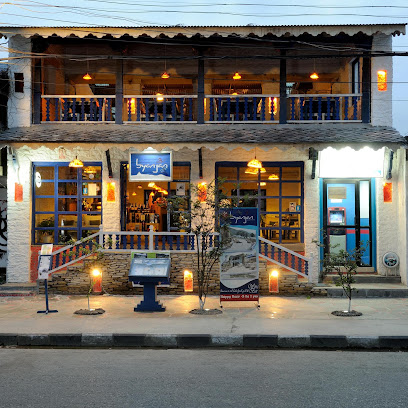
Utopia Garden & Snacks Bar
Experience tranquility and exquisite flavors at Utopia Garden & Snacks Bar in Pokhara – a must-visit culinary retreat for every traveler.
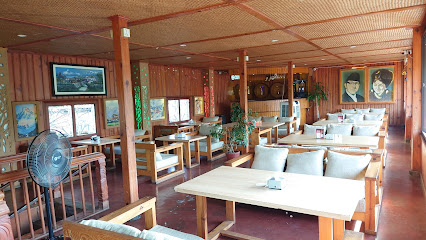
Chilly Bar & Restaurant
Discover culinary delights at Chilly Bar & Restaurant in Pokhara - where local flavors meet stunning mountain views.

Annapurna Garden Cafe & Lounge
Discover Annapurna Garden Cafe & Lounge in Pokhara: A perfect blend of local flavors and serene ambiance amidst stunning mountain views.
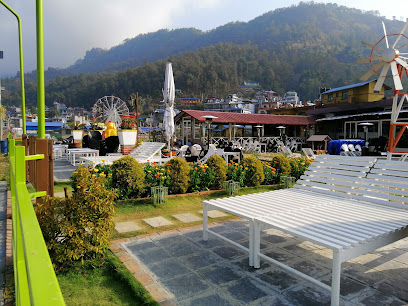
Zen Bistro & Cafe Restaurant
Experience the culinary delights of Zen Bistro & Cafe in Kathmandu – where tradition meets taste in a cozy setting.
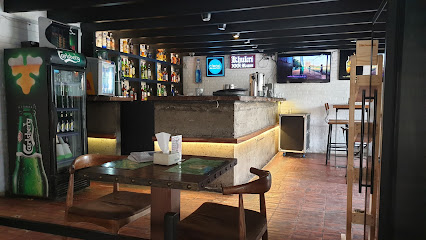
Frituur No.1
Discover Frituur No.1 in Pokhara for tasty fast food delights that perfectly complement your Nepali adventure.
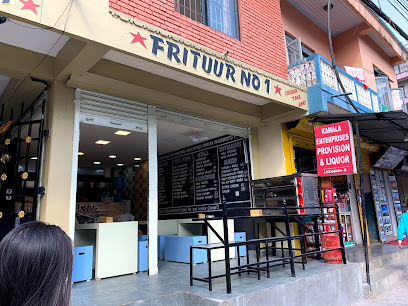
Samsara Garden
Discover tranquility at Samsara Garden, where delicious breakfasts meet lush surroundings in the heart of Kathmandu.
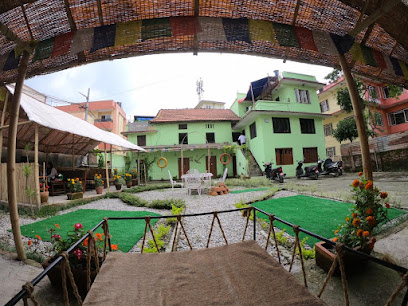
Annapurna Bhanchha
Experience authentic Nepali cuisine at Annapurna Bhanchha in Pokhara - A culinary delight surrounded by stunning natural beauty.
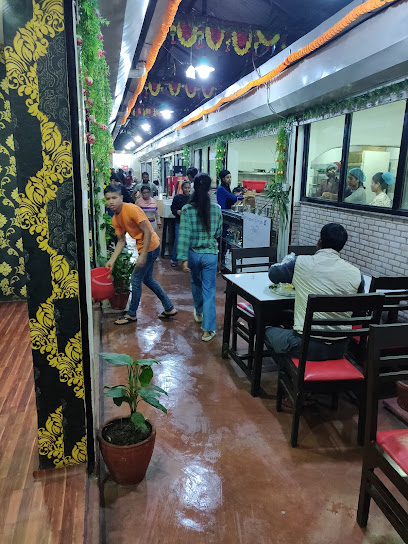
Annapurnna View Point
Experience stunning views and delicious local cuisine at Annapurna View Point in Pokhara - where every meal is accompanied by breathtaking mountain scenery.
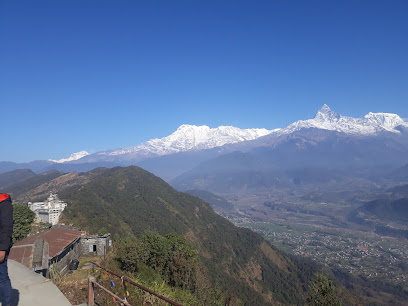
Roshani Guesthouse & Restaurant
Experience authentic Nepali cuisine and stunning mountain views at Roshani Guesthouse & Restaurant in Khudi.
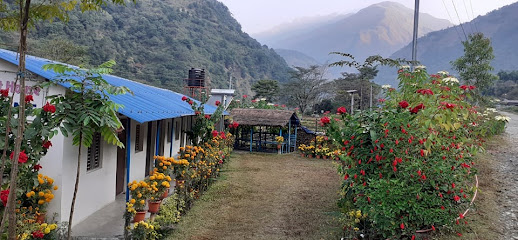
The New Stupa View Restaurant
Experience breathtaking views and exquisite flavors at The New Stupa View Restaurant in Pokhara – where culinary delight meets nature's grandeur.
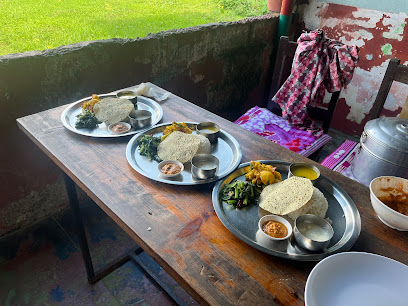
Chautari thakali Bhanchha Ghar
Discover authentic Thakali flavors at Chautari Thakali Bhanchha Ghar, where every dish reflects Nepal's rich culinary heritage.

Lama Restaurant & Bhanchha Ghar
Experience authentic Nepali cuisine at Lama Restaurant & Bhanchha Ghar - where every meal tells a story.
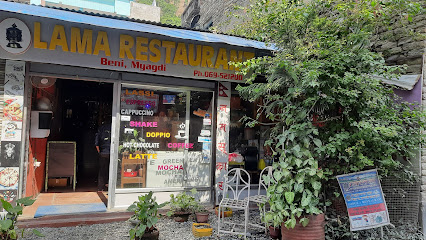
Annapurna Lake View Restaurant
Experience breathtaking mountain views and authentic Nepali cuisine at Annapurna Lake View Restaurant near Begnas Lake.
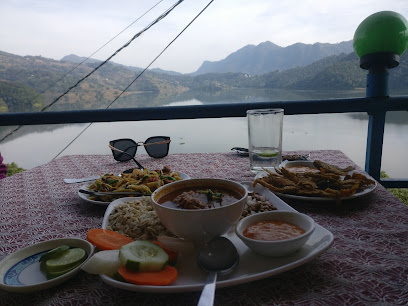
Annapurna Restaurant Cafe & Bar
Experience authentic flavors at Annapurna Restaurant Cafe & Bar amidst breathtaking mountain views on your adventure through Nepal.
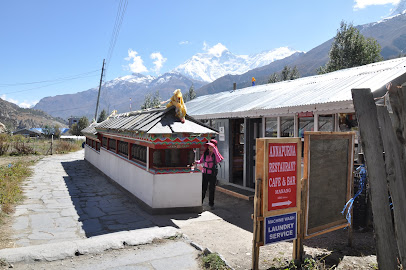
Markets, malls and hidden boutiques
Annapurna Conservation Area
Explore the breathtaking Annapurna Conservation Area, a national park filled with stunning mountain views, diverse ecosystems, and rich cultural experiences.
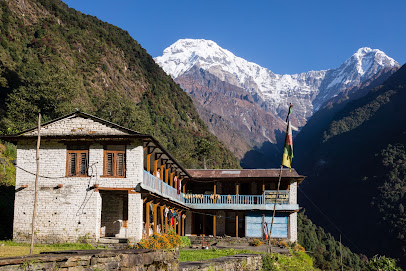
Kalapatthar Trekking Store
Explore the Himalayas with top-quality gear from Kalapatthar Trekking Store in Kathmandu's Thamel district.
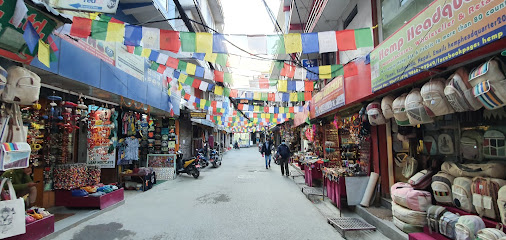
Annapurna Base Camp Trek
Experience breathtaking landscapes and rich culture on the unforgettable Annapurna Base Camp Trek in Nepal, a must-visit for every adventure seeker.
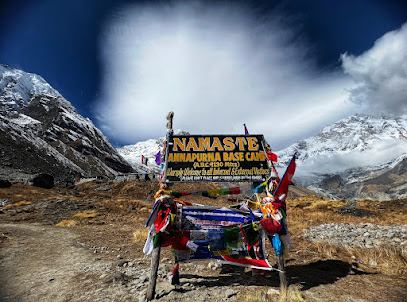
Goreto Gear Traders
Explore Kathmandu's premier outdoor sports store, offering top-quality gear for trekking, climbing, and outdoor adventures in the heart of Thamel.
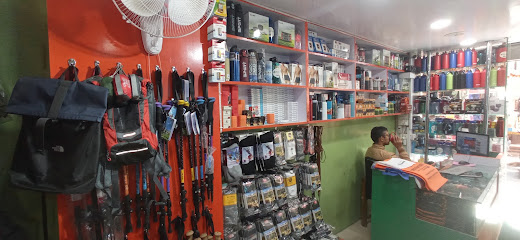
Nepalmountainbike@Pokhara MTB Adventures| cycling holidays| Bike Rental | Tour operator | company| MTB SHOP | Work Shop| KTM
Explore the breathtaking landscapes of Pokhara with thrilling mountain biking adventures at Nepalmountainbike, your gateway to Nepal's cycling paradise.
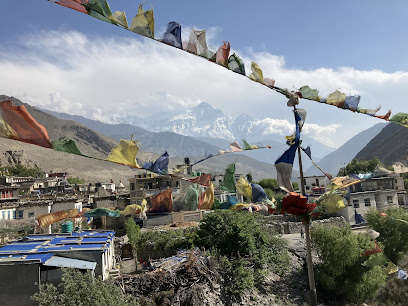
Yak'n'Yeti Trekking Shop
Discover the best trekking gear at Yak'n'Yeti Trekking Shop in Pokhara, your ultimate outdoor adventure hub.
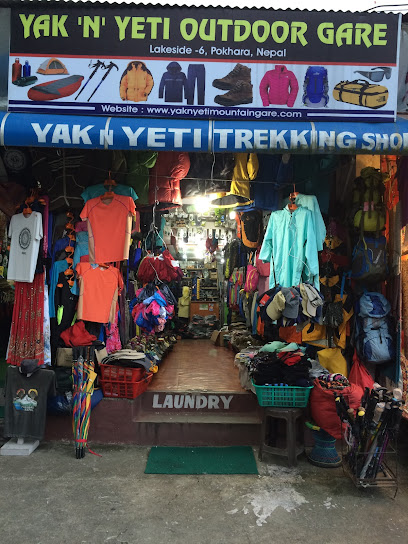
Himalaya Gears (Trekking shops in Thamel, Kathmandu)
Discover top-quality trekking gear at Himalaya Gears in Thamel, Kathmandu – your one-stop shop for adventure in the Himalayas.
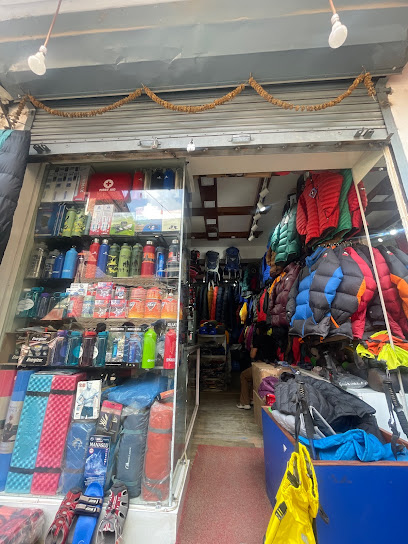
Trekking Shop/ Trek equipment solution
Discover top-quality trekking gear in Pokhara to enhance your adventure in the majestic Himalayas.
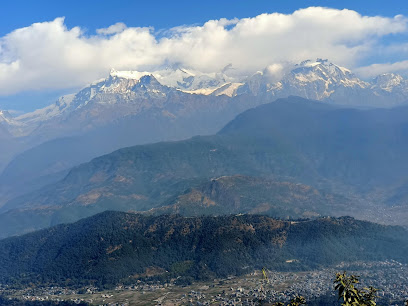
Shona's Alpine
Explore the outdoors with top-quality gear at Shona's Alpine, your trusted clothing supplier in Kathmandu's Thamel district.

Dhukuti
Discover the vibrant essence of Nepal at Dhukuti, a shopping mall filled with unique local products and rich cultural experiences.
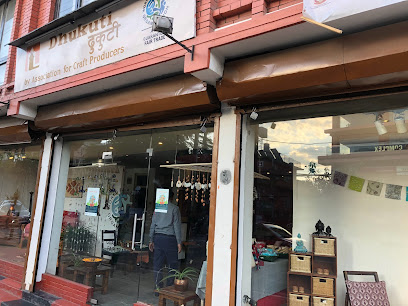
Outdoor Compass Shop
Discover quality outdoor gear and expert advice at the Outdoor Compass Shop in Kathmandu's vibrant Thamel district, your adventure starts here.
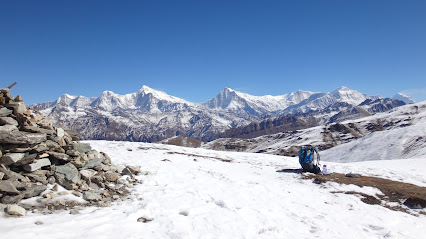
Faith Works Bags and Accessories
Explore unique bags and accessories at Faith Works in Lalitpur, where traditional craftsmanship meets modern style, perfect for every traveler.
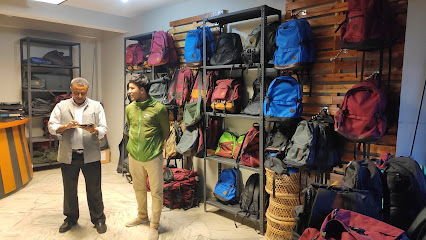
Sherpa Adventure Gear
Explore the best of outdoor clothing and equipment at Sherpa Adventure Gear, your one-stop shop for adventure sports in Kathmandu.
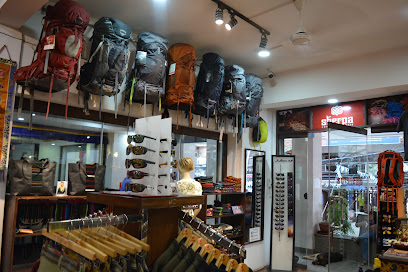
Himalayan Sherpa Trekking Gears Store
Your ultimate destination for high-quality trekking gear in the heart of Pokhara's Lakeside district, perfect for every adventurer.
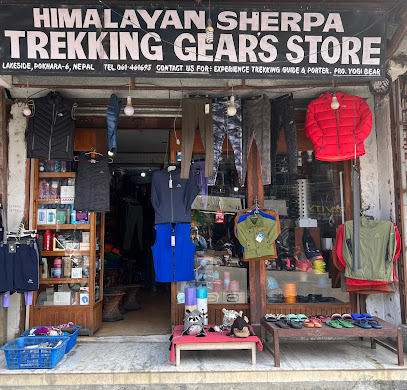
Annapurna Circuit Trek अन्नपूर्ण सर्किट
Discover the breathtaking beauty and cultural richness of the Annapurna Circuit Trek, an unforgettable Himalayan adventure.
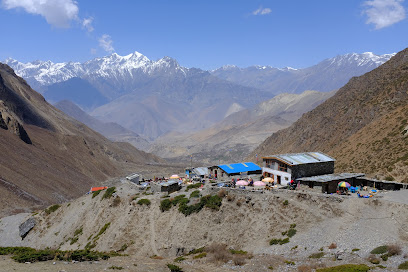
Essential bars & hidden hideouts
Purple Haze Rock Bar
Discover the electrifying nightlife of Kathmandu at Purple Haze Rock Bar, where live music and refreshing drinks await.
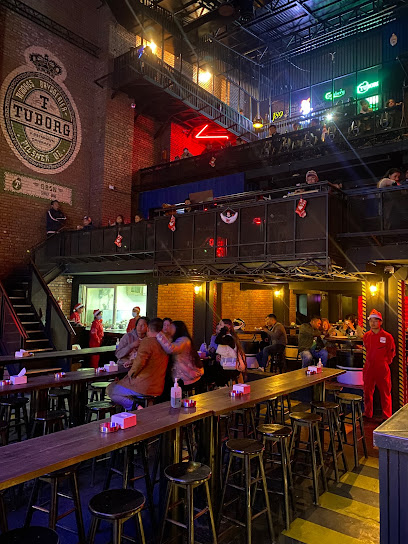
Sam's Bar
Discover the lively spirit of Sam's Bar in Kathmandu, where great drinks and local culture come together in a vibrant atmosphere.
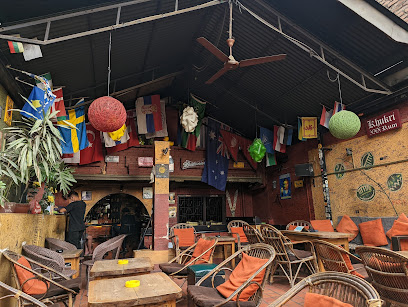
Electric Pagoda Bar & Cafe
Discover the vibrant atmosphere of Electric Pagoda Bar & Cafe, where delicious food meets eclectic charm in the heart of Kathmandu's Thamel district.
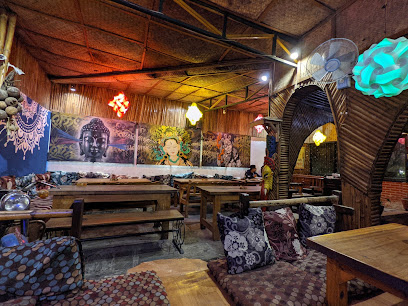
Reggae Bar (रेग्गे बार)
Experience the vibrant nightlife of Kathmandu at Reggae Bar, where reggae music, delicious food, and refreshing drinks come together in a festive atmosphere.
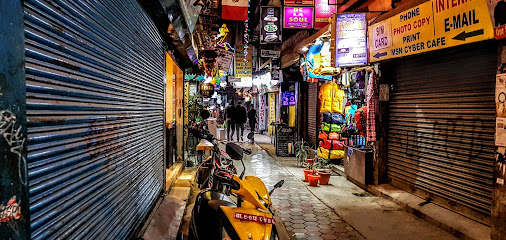
Everest Irish Pub
Discover the vibrant ambiance and delightful flavors at Everest Irish Pub, a must-visit Irish pub in the heart of Kathmandu's Thamel district.
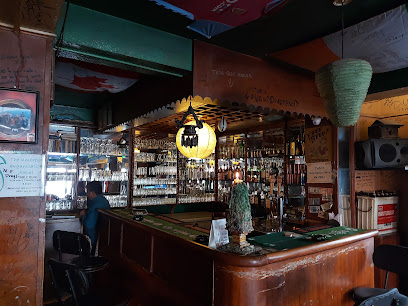
Oskar Bar & Grill
Experience the vibrant flavors of Nepal at Oskar Bar & Grill, where culinary excellence meets a warm and inviting atmosphere in Kathmandu.
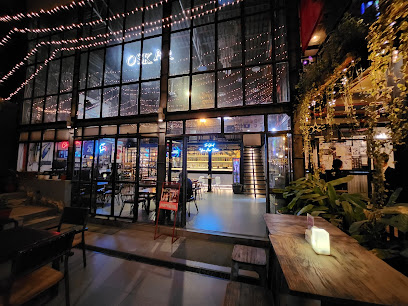
The Bar Bar Black Sip
Experience the vibrant nightlife at The Bar Bar Black Sip in Thamel, Kathmandu, where great music and refreshing drinks await you.
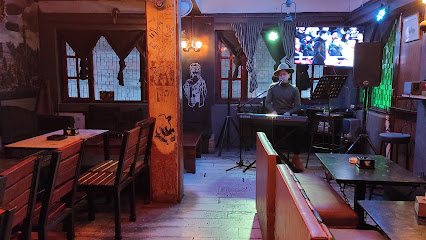
Tom And Jerry Pub
Discover the vibrant nightlife at Tom And Jerry Pub in Kathmandu - a perfect mix of local flavors and lively ambiance.
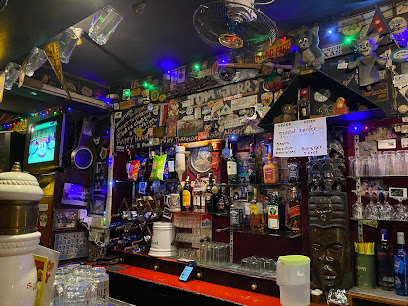
Barc
Experience the vibrant nightlife of Kathmandu at Barc, where expertly crafted cocktails and a lively atmosphere await you.
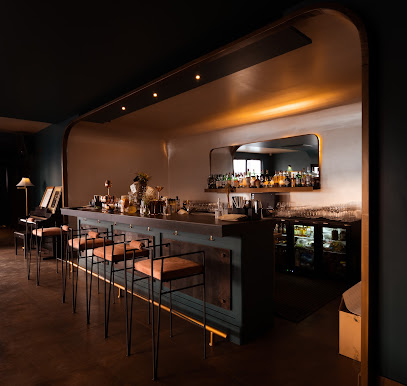
BlackBird
Discover the vibrant nightlife of Kathmandu at BlackBird, a lively bar in Thamel offering exquisite drinks and a welcoming atmosphere.
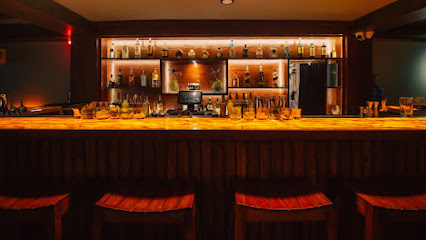
Annapurna Jamboree Gastro Pub
Experience the finest of Nepali and international cuisine at Annapurna Jamboree Gastro Pub, with breathtaking views of the majestic Annapurna range.
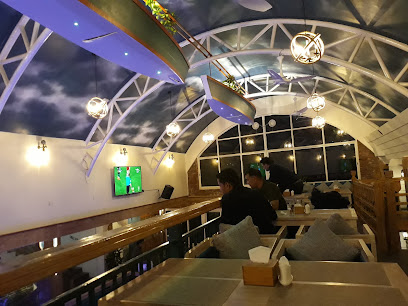
Trekkers Bar
Experience the vibrant sports culture of Kathmandu at Trekkers Bar, your go-to destination for great food, drinks, and live sports events.
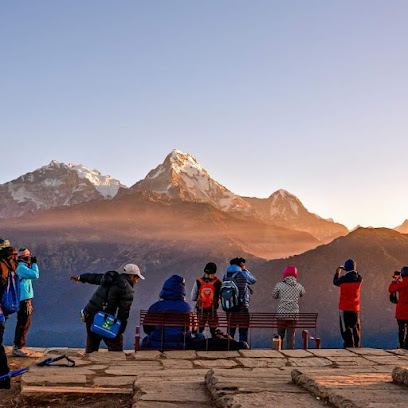
Pauline’s Jhamsikhel
Discover the lively atmosphere and exceptional drinks at Pauline’s Jhamsikhel, a top bar destination in Lalitpur, Nepal.
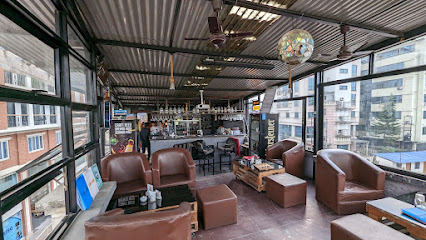
Annapurna Restaurant Cafe & Bar
Experience the flavors of Nepal at Annapurna Restaurant Cafe & Bar, where local ingredients meet international cuisine in a stunning setting.
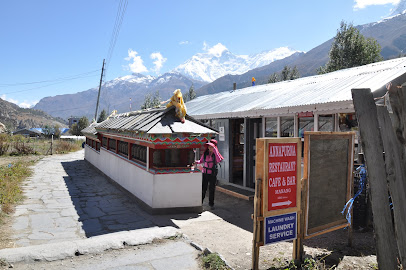
Triple-Double Lounge & Bar
Discover the lively ambiance of Triple-Double Lounge & Bar in Kathmandu, where locals and travelers unite over drinks and vibrant entertainment.
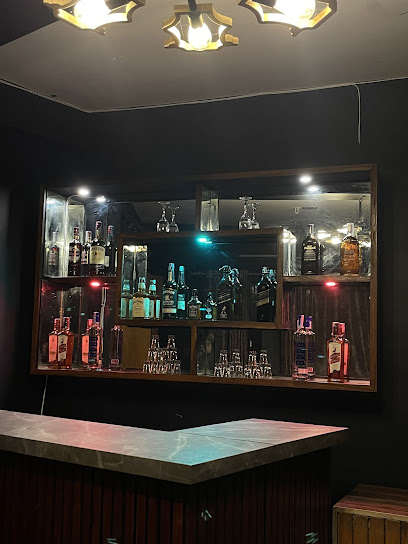
Local Phrases about Annapurna Circuit
-
- Helloनमस्ते
[Namaste] - Goodbyeफेरी भेटौं
[Feri bhetou] - Yesहो
[Ho] - Noहोइन
[Hoin] - Please/You're welcomeकृपया
[Kripya] - Thank youधन्यवाद
[Dhanyabad] - Excuse me/Sorryक्षमा गर्नुहोस्
[Kshama garnuhos] - How are you?तिमीलाई कस्तो छ?
[Timilai kasto cha?] - Fine. And you?राम्रो छ। र तिमी?
[Ramro cha. Ra timi?] - Do you speak English?तिमी अंग्रेजी बोल्नुहुन्छ?
[Timi angreji bolnuhuncha?] - I don't understandमैले सम्झिन
[Maile samjhina]
- Helloनमस्ते
-
- I'd like to see the menu, pleaseकृपया मेनु हेर्न मिल्नुहोस्
[Kripya menu hern milnuhos] - I don't eat meatम मासु खाँदिन
[Ma masu khandina] - Cheers!चियर्स!
[Cheers!] - I would like to pay, pleaseकृपया तिर्न चाहन्छु
[Kripya tirn chahanchu]
- I'd like to see the menu, pleaseकृपया मेनु हेर्न मिल्नुहोस्
-
- Help!मदद गर्नुहोस्!
[Madad garnuhos!] - Go away!लाग्नुहोस्!
[Lagnuhos!] - Call the Police!प्रहरीलाई बोलाउनुहोस्!
[Praharilai bolaunuhos!] - Call a doctor!डाक्टरलाई बोलाउनुहोस्!
[Doctorlai bolaunuhos!] - I'm lostमलाई गुम भयो
[Malai gum bhayo] - I'm illमलाई बिरामी छ
[Malai birami cha]
- Help!मदद गर्नुहोस्!
-
- I'd like to buy...मलाई ... किन्न चाहन्छु
[Malai ... kinn chahanchu] - I'm just lookingम केवल हेर्न आएको
[Ma keval hern aeko] - How much is it?यो कति हो?
[Yo kati ho?] - That's too expensiveयो धेरै महंगो छ
[Yo dherai mahango cha] - Can you lower the price?के तपाईं राम्रो गर्न सक्नुहुन्छ?
[Ke tapain ramro garn saknuhuncha?]
- I'd like to buy...मलाई ... किन्न चाहन्छु
-
- What time is it?कति बजेको छ?
[Kati bajeko cha?] - It's one o'clockएक बजे छ
[Ek baje cha] - Half past (10)दस बजे अर्को अर्धबाजे
[Das baje arko ardhabaje] - Morningबिहान
[Bihan] - Afternoonदिउँसो
[Diunso] - Eveningसाँझ
[Sanjh] - Yesterdayहिजो
[Hijo] - Todayआज
[Aaj] - Tomorrowभोलि
[Bholi] - 1एक
[Ek] - 2दुई
[Dui] - 3तीन
[Tin] - 4चार
[Char] - 5पाँच
[Panch] - 6छ
[Chha] - 7सात
[Saath] - 8आठ
[Aath] - 9नौ
[Nau] - 10दस
[Das]
- What time is it?कति बजेको छ?
-
- Where's a/the...?... कहाँ छ?
[... Kaha cha?] - What's the address?ठेगाना के हो?
[Thegana ke ho?] - Can you show me (on the map)?तपाईं मलाई देखाउन सक्नुहुन्छ?
[Tapain malai dekhau sakhnuhuncha?] - When's the next (bus)?अर्को (बस) कहिले जान्छ?
[Arko (bus) kahile jancha?] - A ticket (to ....)एक टिकट (... सम्म)
[Ek ticket (... samma)]
- Where's a/the...?... कहाँ छ?
History of Annapurna Circuit
-
The Annapurna Circuit is an ancient network of trade routes that has been used for centuries by traders, pilgrims, and locals. These paths facilitated the exchange of goods such as salt, grain, wool, and livestock between the fertile lowlands and the arid highlands of Nepal and Tibet. The routes were integral to the cultural and economic interactions among the diverse communities in the region.
-
The Thakali people, indigenous to the Mustang District through which part of the Annapurna Circuit passes, have a rich history and culture. Historically, they were known as prosperous traders and innkeepers. The Thakali have a unique cultural identity, with customs and traditions that reflect a blend of Tibetan and Nepali influences. Their traditional hospitality has made them prominent figures in the history of the Annapurna region.
-
The Annapurna Circuit traverses through regions inhabited by the Gurung and Magar communities, who are known for their distinct cultural heritage. These ethnic groups have their own languages, traditional dances, and festivals. The Gurung people are particularly famous for their role as Gurkha soldiers in the British and Indian armies. The cultural richness of these communities adds a vibrant tapestry to the region's heritage.
-
Historically, the Annapurna Circuit passes through areas that were once part of the ancient kingdoms of Manang and Mustang. These kingdoms had their own monarchies and were culturally and politically distinct. The Kingdom of Mustang, in particular, remained a semi-independent kingdom until the 18th century and still retains a unique Tibetan Buddhist culture, which is evident in the monasteries and chortens found along the trail.
-
The Annapurna Conservation Area Project (ACAP) was established in 1986 to protect the region's unique biodiversity and cultural heritage. It is Nepal's largest protected area and includes the Annapurna Circuit. The project has played a crucial role in promoting sustainable tourism, conservation of wildlife, and preservation of local cultures. The establishment of ACAP marked a significant milestone in the region's history, ensuring that the natural beauty and cultural richness of the Annapurna Circuit are preserved for future generations.
-
The Annapurna Circuit gained popularity among international trekkers in the 1970s, thanks to its breathtaking landscapes and cultural diversity. The influx of tourists brought economic opportunities to the region but also posed challenges such as environmental degradation and cultural erosion. Over the years, efforts have been made to promote responsible tourism, ensuring that the benefits of trekking are shared with local communities while minimizing negative impacts.
Annapurna Circuit Essentials
-
The Annapurna Circuit is located in the Annapurna mountain range of central Nepal. The closest international airport is Tribhuvan International Airport in Kathmandu. From Kathmandu, you can take a domestic flight to Pokhara, which is the gateway to the Annapurna region. Alternatively, you can take a bus or hire a private jeep from Kathmandu or Pokhara to reach the starting point of the trek, which is usually Besisahar. The road journey from Kathmandu to Besisahar typically takes around 6 to 7 hours.
-
Within the Annapurna Circuit, the primary mode of transportation is walking. For areas accessible by road, local buses and jeeps are available and can be used to cover certain segments. In recent years, some parts of the circuit have been connected by roads, allowing for jeep rides to reduce the length of the trek if needed. For longer distances, especially when returning to Kathmandu or Pokhara, buses and private vehicles are the most common options.
-
The official currency in Nepal is the Nepalese Rupee (NPR). While major hotels and tourist shops in Kathmandu and Pokhara accept credit cards, cash is the primary mode of payment along the Annapurna Circuit. It is advisable to carry sufficient cash as ATMs are scarce and unreliable in the remote trekking areas. Exchanging currency in Kathmandu or Pokhara before starting the trek is recommended.
-
The Annapurna Circuit is generally safe for tourists. However, standard precautions should be taken. Petty theft can occur, so always keep your belongings secure. Trekking with a guide or in a group is advisable for added safety. Be cautious of high-altitude sickness, and ensure you are well-prepared with appropriate gear and clothing. There are no specific high-crime areas targeting tourists, but always stay vigilant and aware of your surroundings.
-
In case of emergency, contact the nearest police station or local authorities. The emergency contact number in Nepal is 100 for police and 102 for medical emergencies. It is crucial to have travel insurance that covers helicopter evacuation, as this is often the only way to get immediate medical assistance in remote areas. Make sure to carry a first aid kit and be aware of the locations of health posts and clinics along the trek.
-
Fashion: Do dress modestly and wear appropriate trekking gear. Avoid wearing revealing clothing. Religion: Do respect local customs and traditions. Always ask for permission before taking photographs of religious sites or local people. Public Transport: Do be respectful and patient, as public transport can be crowded and schedules may not always be reliable. Greetings: Do greet people with a 'Namaste' and a slight bow. Eating & Drinking: Do try local food and drink, but avoid raw or poorly cooked food. Don't refuse hospitality, as it is considered impolite.
-
To experience the Annapurna Circuit like a local, engage with the local communities and learn about their culture and traditions. Visit local teahouses and interact with the hosts to gain insights into their way of life. Participate in local festivals if your visit coincides with one. Respect the environment by following the 'Leave No Trace' principles, and support local businesses by purchasing local products and services.
Trending Landmarks in Annapurna Circuit
-
Pokhara Lakeside
-
World Peace Pagoda
-
Annapurna Conservation Area
-
Shree Muktinath Temple
-
International Mountain Museum
-
Mahendra Cave
-
Pumdikot Religious Area
-
Tal Barahi Temple, Pokhara
-
Sarangkot Sunrise Pokhara
-
Basundhara Park
-
MAULA KALIKA
-
Annapurna Base Camp Trek
-
Gurkha Memorial Museum
-
Matepani Gumba
-
Annapurna Sanctuary
Nearby Cities to Annapurna Circuit
-
Things To Do in Bandipur
-
Things To Do in Gorkha
-
Things To Do in Lumbini
-
Things To Do in Chitwan
-
Things To Do in Kathmandu
-
Things To Do in Patan
-
Things To Do in Bhaktapur
-
Things To Do in Nagarkot
-
Things To Do in Namche Bazaar
-
Things To Do in Lucknow
-
Things To Do in Patna
-
Things To Do in Varanasi
-
Things To Do in Kanpur
-
Things To Do in Darjeeling
-
Things To Do in Gangtok













